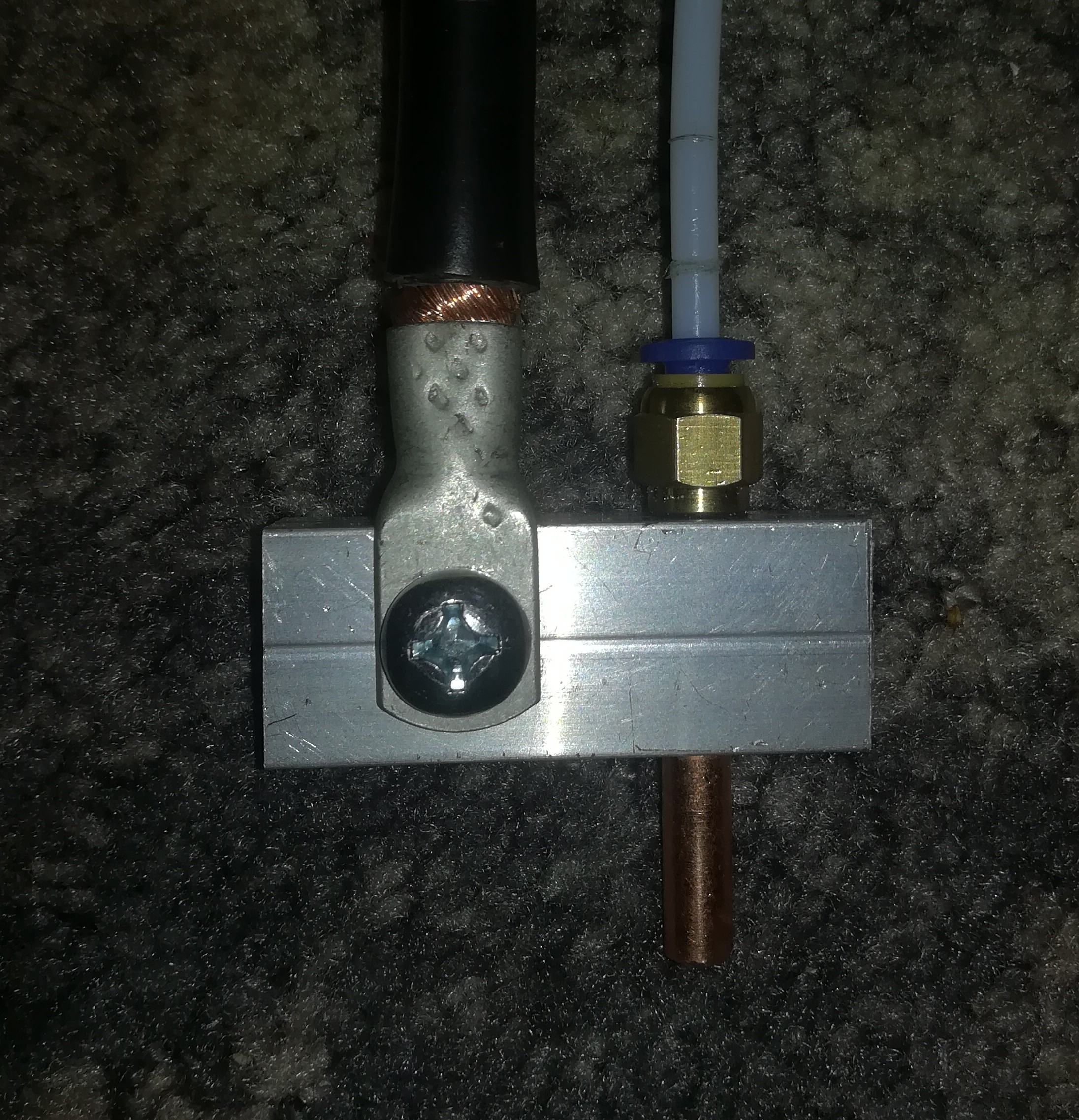
I did a quick test of the new concept and first it works both welding and softening luckily without welding the head to the surface. I tested both with a 250ms pulse and ca. 2645A which works good. But then I burned the fly screen by a softening test and the steel from it get stuck to the nozzle. Since then the wire get stuck in the nozzle like @Bharbour said.
So I will try to weld or melt the wire with pulses from the spot welder power supply when it touches the workpiece with clearence between the nozzle and the workpiece. It seems like the machine is turning more and more from a 3D spot welder to a 3D resistance welding machine by excluding ways which not work.
Will also test whether the power supply can handle short pulses without upgrading it like eg. 25ms on, 250ms off, 25ms on and so on. Doing so it should be possible to regulate the intensity of the heating by the duty cycle of the power supply like the temperature of the extruder on a 3D printer.
Maybe it works with this attempt.
 Dominik Meffert
Dominik Meffert
Discussions
Become a Hackaday.io Member
Create an account to leave a comment. Already have an account? Log In.
Battery tab spot weld mode?
Are you sure? yes | no
As for wire getting stuck in nozzle, I think there should be some mitigations in printer software, like retraction and hopping in standard printers. When you know you will end line, retract 1 width of wire+fast side movement to break connection, I think simple zhop will not be enough and steel is not oozing like plastic.
P.S. Fantastic work!
Are you sure? yes | no
Hi,
I tested today melting the wire at contact with the workpiece and it seems like if the feedrate and moving speed are right it should be possible to print the wire very similar to normal 3D printing and simpler than bending + spotwelding (which I actually thought would be simpler). Maybe this way it could be possible to use normal slicer software for creating GCODE which would make it a lot easier. Tested recently adding another resistor which leads to less power use and slower melting of the wire, but as long as the wire heats up faster than it can cool down it stays molten. So less power should only reduce the possible printing speed. Ordered six more resistors, so that all resistors together can handle 1200W. If I wire them in series it should reduce the power to around 1100W which they can handle and if that's enough for still melting the wire they would be good to go. If not I could order even more resistors and wire some of them in parallel to get the resistance down and the power up. They should get delivered tomorrow.
Thank you.
Are you sure? yes | no